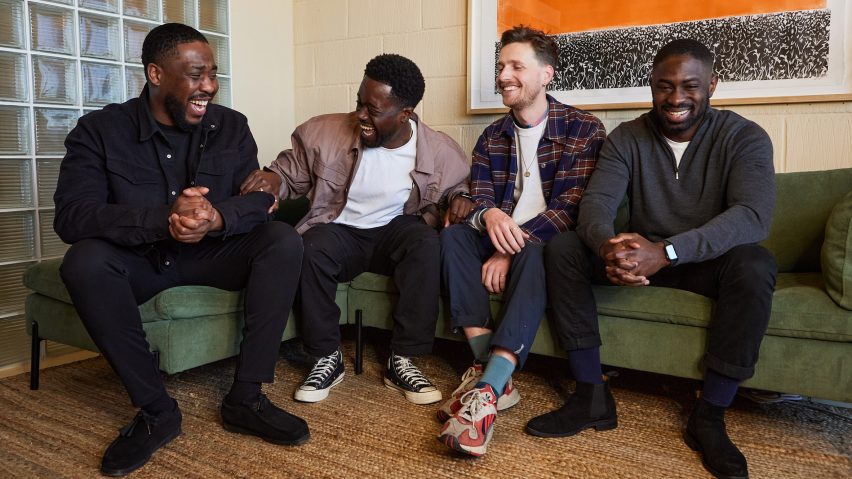
Eight projects by POOR Collective that reimagine co-design as "a two-way street"
To mark POOR Collective winning London's Emerging Design Medal, co-founder Shawn Adams rounds up eight must-know projects by the social enterprise, focused on involving young people in the regeneration of their communities.
POOR Collective, which is an acronym for power out of restriction, is a social-impact design studio that aims to engage young people from disadvantaged backgrounds in overhauling London's public spaces through co-design workshops.
Working in collaboration with local schools and councils, the ultimate aim is to create more democratic spaces while imparting participants with valuable design skills and giving them a sense of agency and pride in their local area.
Co-design should be mutually beneficial
"A lot of people talk about co-design but then, especially with young people, they assume that they have to take the reins a little bit," said Adams, who co-founded POOR Collective together with Larry Botchway, Ben Spry and Matt Harvey-Agyemang.
"They just kind of have the young people along for the ride or give them a fake sense of free will when they already know what they're going to design," he added.
"But for us, it's about genuinely listening to them, platforming their voices and then incorporating their thoughts and feelings into the final design."
In this way, the studio hopes to move away from more one-sided notions of participatory design, which often functions as a purely extractive process, mining people for ideas and inspiration on how to make a space more inclusive, sustainable, functional and so on.
Instead, POOR Collective hopes to foster a more reciprocal approach that actually leaves participants with transferrable design and business skills.
"For us, it's about seeing things as a two-way street," Adams explained on a recent episode of Dezeen's Climate Salon podcast. "It's very easy to say okay, we're going to engage with the local community, we're going to speak to some young people."
"But it's not as simple as just asking the young people for advice or answers," he added. "If we want young people to show us what a more sustainable space looks like to them, and a space that they would maintain, we would need to show them how to draw that space."
"If we are wanting to genuinely engage with people, we need to upskill them first."
Design medal rewards contribution to capital
To this end, POOR Collective is also collaborating with industry partners from The Office Group to Morrow + Lorraine to offer paid opportunities for getting hands-on experience in the notoriously impenetrable worlds of architecture or design.
In recognition of the impact these efforts have had on the capital and its design scene, the team recently received the Emerging Design Medal at this year's London Design Festival.
Here, Adams walks us through eight formative projects from the studio, ranging from game tables and public pavilions to internship programmes designed to gain disadvantaged young people a foothold in the industry.
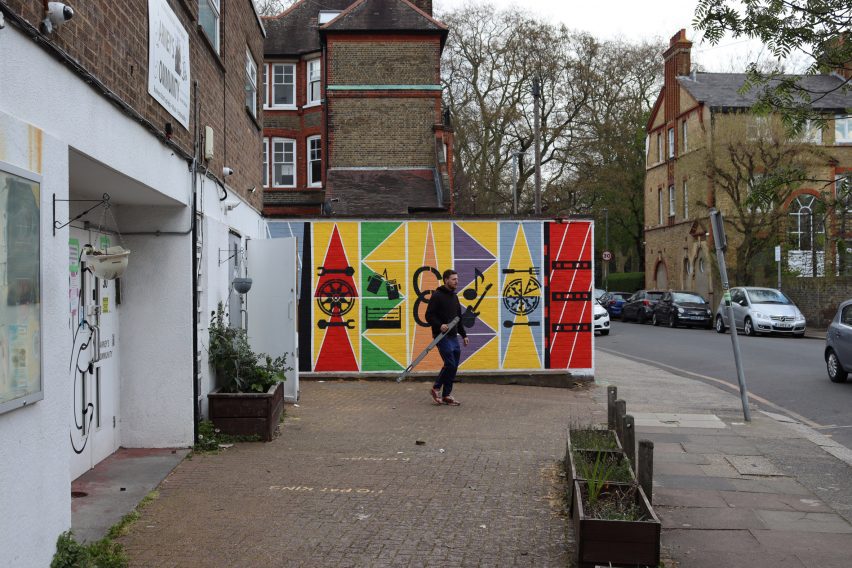
Carney's Mural, 2020
For its first-ever project, POOR Collective collaborated with Carney's Community, a charity in southwest London that works to keep disadvantaged young people off the streets by engaging them in meaningful activities from boxing and cooking to running a local bike repair shop.
Tasked with reviving a drab, neglected wall outside Carney's boxing gym in Wandsworth, the group worked with kids from the charity over their autumn half-term to design and paint a mural rather than parachuting in an external designer.
"The fact that it's been a few years and no one's drawn over it, there's been no graffiti, I think it speaks volumes," Adams said. "Because it shows that obviously there's a desire for this kind of thing, people respect it in the area."
"To be able to walk past it every day and say, I contributed to that, I think it's powerful," he continued. "And that's one of the main points of the work that we do at POOR, is giving people the power to say this is something that I created, even if they don't see themselves as a designer."
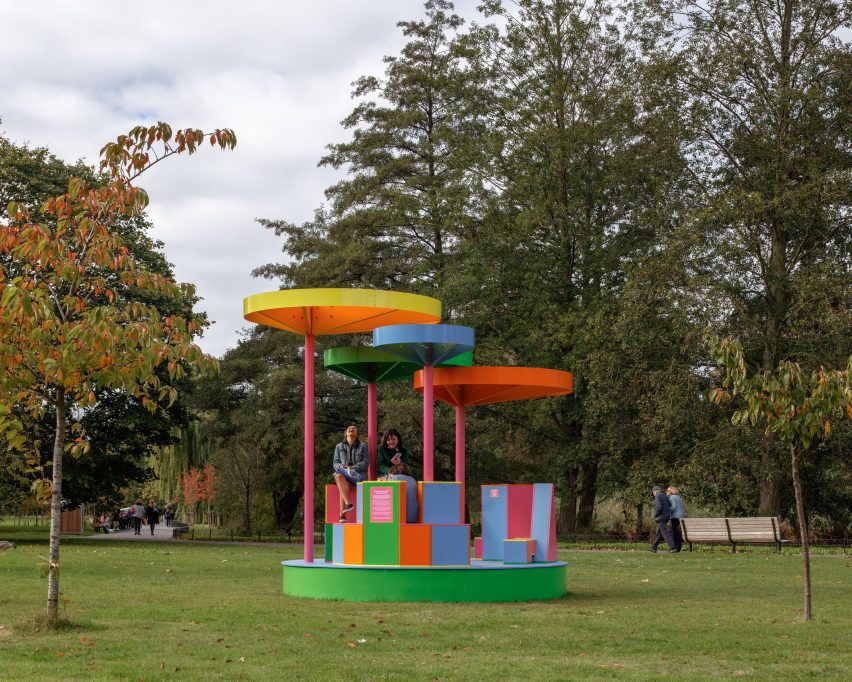
Bringing Home to The Unknown, 2021
When POOR Collective was brought in by RIBA to give workshops on architecture at the Mayesbrook Park School in Becontree, the lessons were meant to be entirely theoretical.
But the studio promptly changed the brief to allow the pupils – who had been expelled from mainstream schools due to poor behaviour or learning difficulties – to instead create a real, tangible piece of public architecture.
The outcome is a pavilion that was installed in Regent's Park for a month, incorporating benches and canopies to create an inclusive social space that young people could call their own.
"A lot of young people don't have spaces that they think belong to them," Adams said. "The whole point of design is to be able to take an idea and then make that idea tangible and bring it into the real world."
"If we teach them all the skills but then they can't see how that kind of training translates to something physical, I think it can feel quite superficial," he continued. "So with all of our projects, it's about having a tangible output."
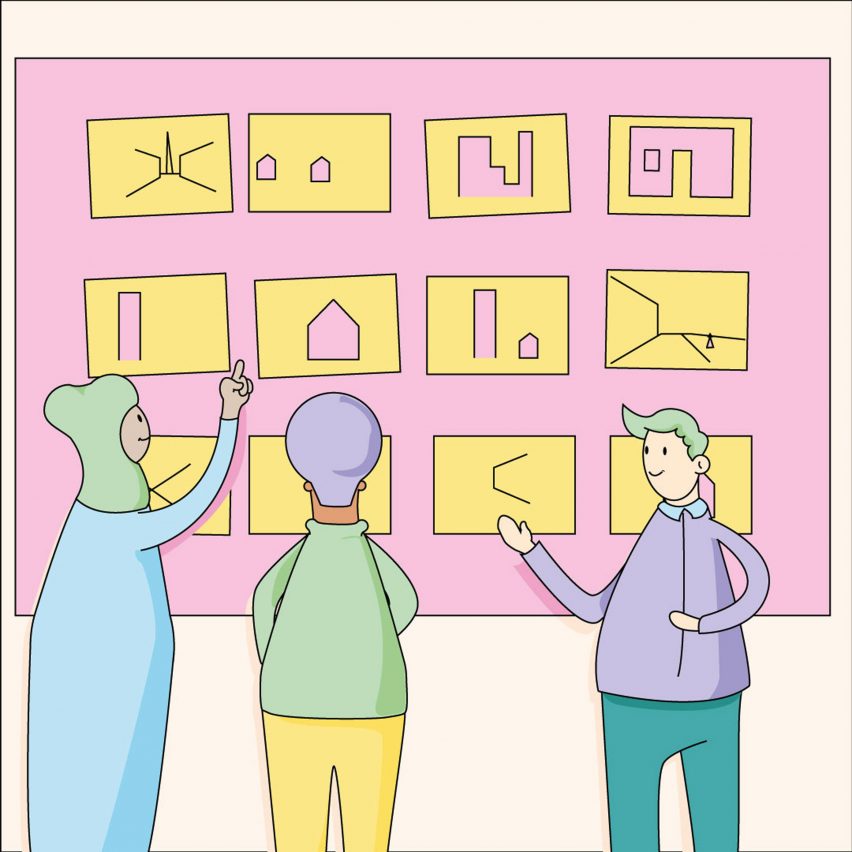
Build The Way internship, 2021
Together with London architecture firm GPAD, POOR Collective developed a pilot internship programme in 2021 that gave one pupil the chance to get paid work experience in a real architecture office, supported by intensive mentoring over the course of a year.
"Three of us are architects and we see the difficulties in young people getting into the architecture profession, especially if you're not from a middle-class or upper-middle-class family," Adams said.
"There are a lot of barriers to getting into architecture, especially financial barriers," he added. "So we wanted to create a programme, where one young person would get the opportunity to actually work in an architecture office because we had just not seen that at the time."
Since the initial round in 2021, the programme has expanded to take in four interns at four different practices – including HÛT, ShedKM and Morrow + Lorraine – and also comes with an official EPQ qualification that can help them meet universities' entry requirements.
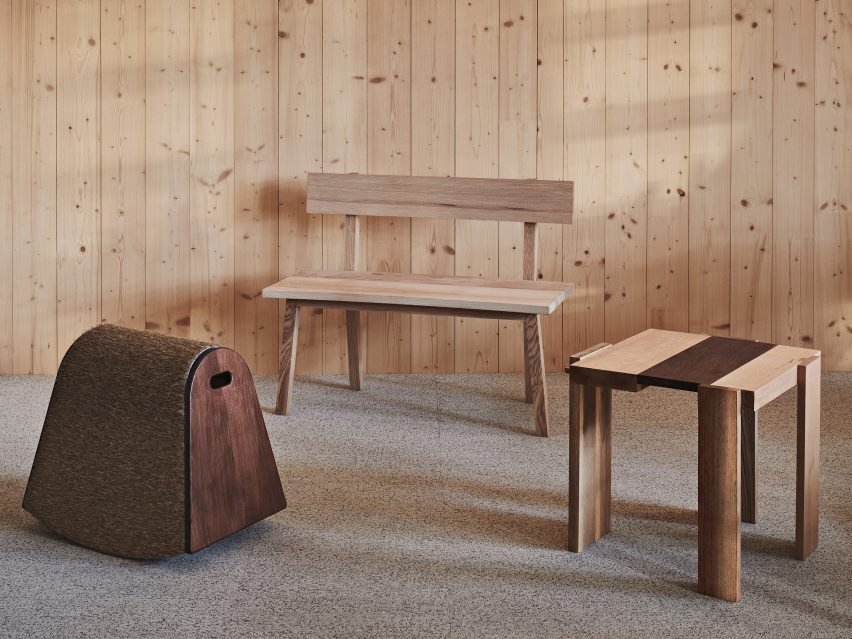
Makers & Mentors, 2022
As part of this six-week mentorship programme, POOR Collective paired three university students with three established designers – Sebastian Cox, Andu Masebo and Matteo Fogale.
Under their guidance, the young people each developed one piece of furniture for The Office Group's Black & White Building in Shoreditch.
"The mentorship element is super, super important," Adams said. "You need that mentorship to understand the industry, how to go about things, how to conduct yourself."
"Otherwise, we've seen people being given an opportunity, they take the opportunity with both hands, they do really well but because they're not given any guidance, once that programme elapses, then they're kind of back out in the cold and they don't know what to do next," he continued.
"A lot of students leave university and they don't quite know what opportunities are out there. Especially in the design industry, it's not that straightforward."
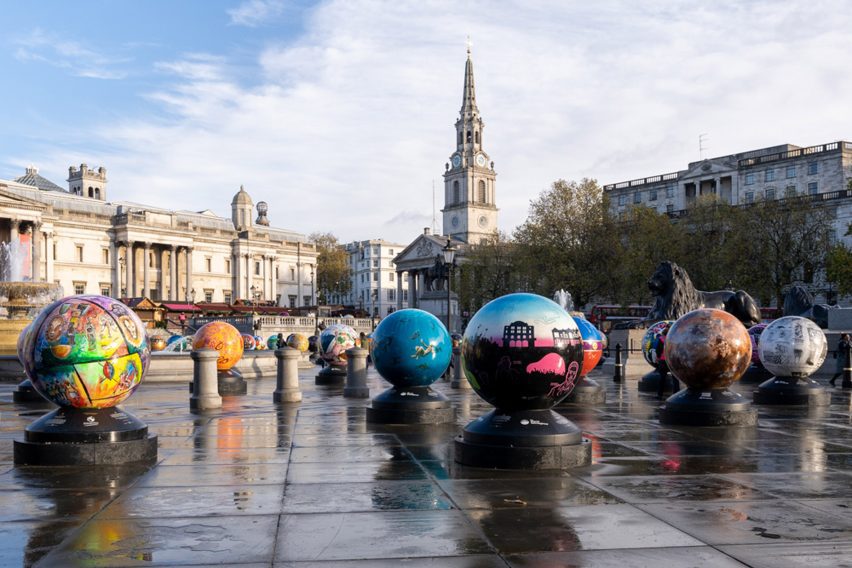
Beneath The Surface, 2022
As part of The World Reimagined project, raising awareness about the transatlantic slave trade and its ongoing legacy, POOR Collective helped to design one of 103 globe sculptures that were displayed in busy thoroughfares in cities around the UK including London's Trafalgar Square.
Co-designed together with locals in Camden, the illustration celebrates the accomplishments of some of the borough's most notable Black residents including activist Athian Akec and Dr Beryl Gilroy – a prolific Caribbean author and one of the first black headteachers in the UK.
"We worked with Camden Council to develop a design that would go on a globe that spoke to black identity in Camden and key figures and key moments in Camden's black history that shaped the actual borough," Adams said.
"I think a lot of people see Camden as this tourist attraction but there's a lot of rich history around that."
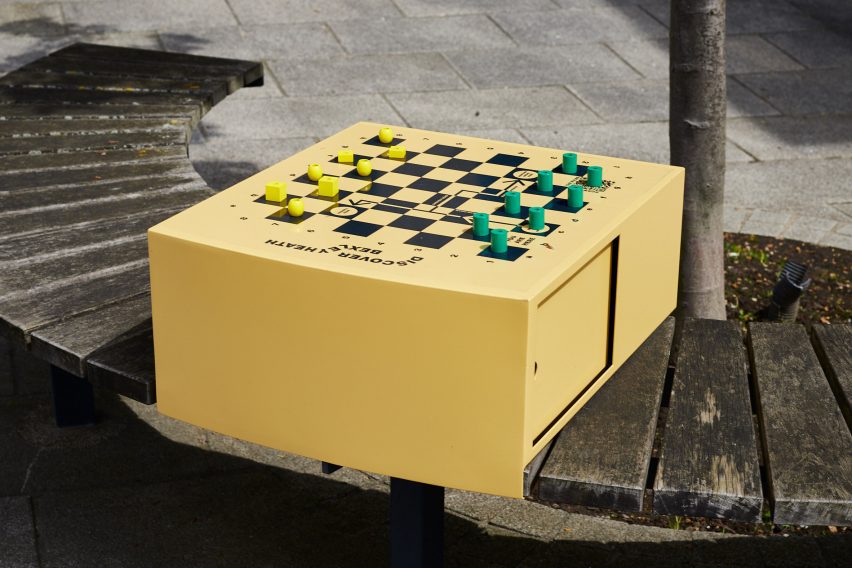
Bexleyheath High Street For All, 2023
Supported by funding from the Mayor of London, this project saw POOR Collective work with architecture firm We Made That and locals in Bexleyheath to revitalise the suburb's high street.
Intergenerational workshops saw pupils from several different schools work together with retirees to figure out how the planning of the area could be improved to better suit residents of all ages.
Together, they designed colourful flags and wayfinding to brighten up Bexleyheath High Street, alongside benches and game tables to encourage lingering and socialising.
"The high street was super dense, especially when the school kids would come out," Adams said. "So they were saying if they had these gaming stations, then people would hang out in different areas of the high street and it wouldn't be super dense around where the bus stops are."
Another arm of the project, the Youth Enterprise Programme, worked with the pupils to design and sell T-shirts, tote bags and playing cards in a bid to impart both design and entrepreneurship skills.
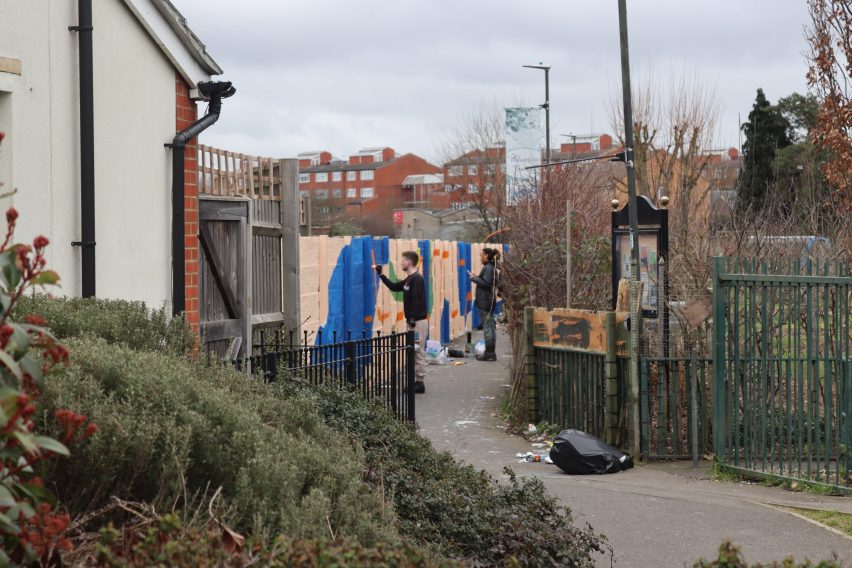
Mitcham Colour-Way, 2023
Another mural project saw POOR Collective make over an alleyway in Mitcham, the southwest London suburb where three of the studio's founders grew up.
"It's an alleyway that we use quite often but it was quite rundown and people treated it quite badly," Adams said. "So we just kind of decided that we should do something. It was nice to give it a bit of vibrancy."
The design itself was conceived and realised through co-design workshops with students from the Royal College of Art (RCA) – where POOR Collective was first formed – together with young people from different parts of London.
It integrates abstract outlines of Mitcham's greenspaces alongside motifs of lavender and cricket stumps, in a nod to the fact that the area is a historic producer of lavender and home to what is thought to be the oldest cricket ground still in use today.
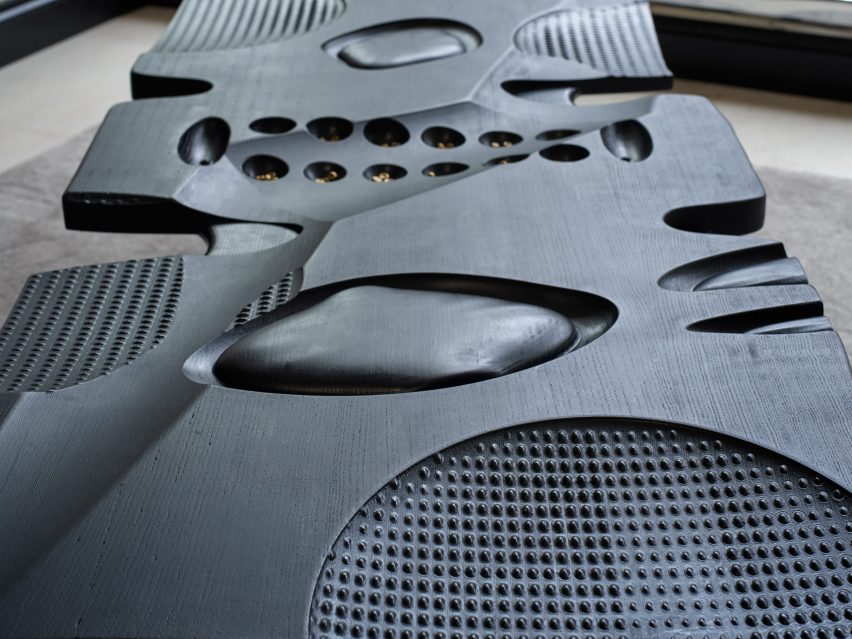
Powershift, 2023
POOR Collective took this year's London Design Festival as an opportunity to give a broader platform to a roster of young and emerging talent, in an exhibition put together as a joint effort by all the participants.
Among the projects featured was Giles Nartey's game-board bench, a textile wall hanging by Shanice Palmer that was woven in collaboration with different community groups and a hoover by Edit Collective that can only be operated by three people, as a comment on women's unpaid domestic labour.
"When Brompton Design District and Jane Withers Studio approached us and said they had a space and would we be interested in doing an exhibition, the first thing that came to mind was to platform young and emerging designers," Adams said.
"The majority of the people in the space haven't showcased their work outside of student exhibitions."
The top image is by Tobi Sobowale.